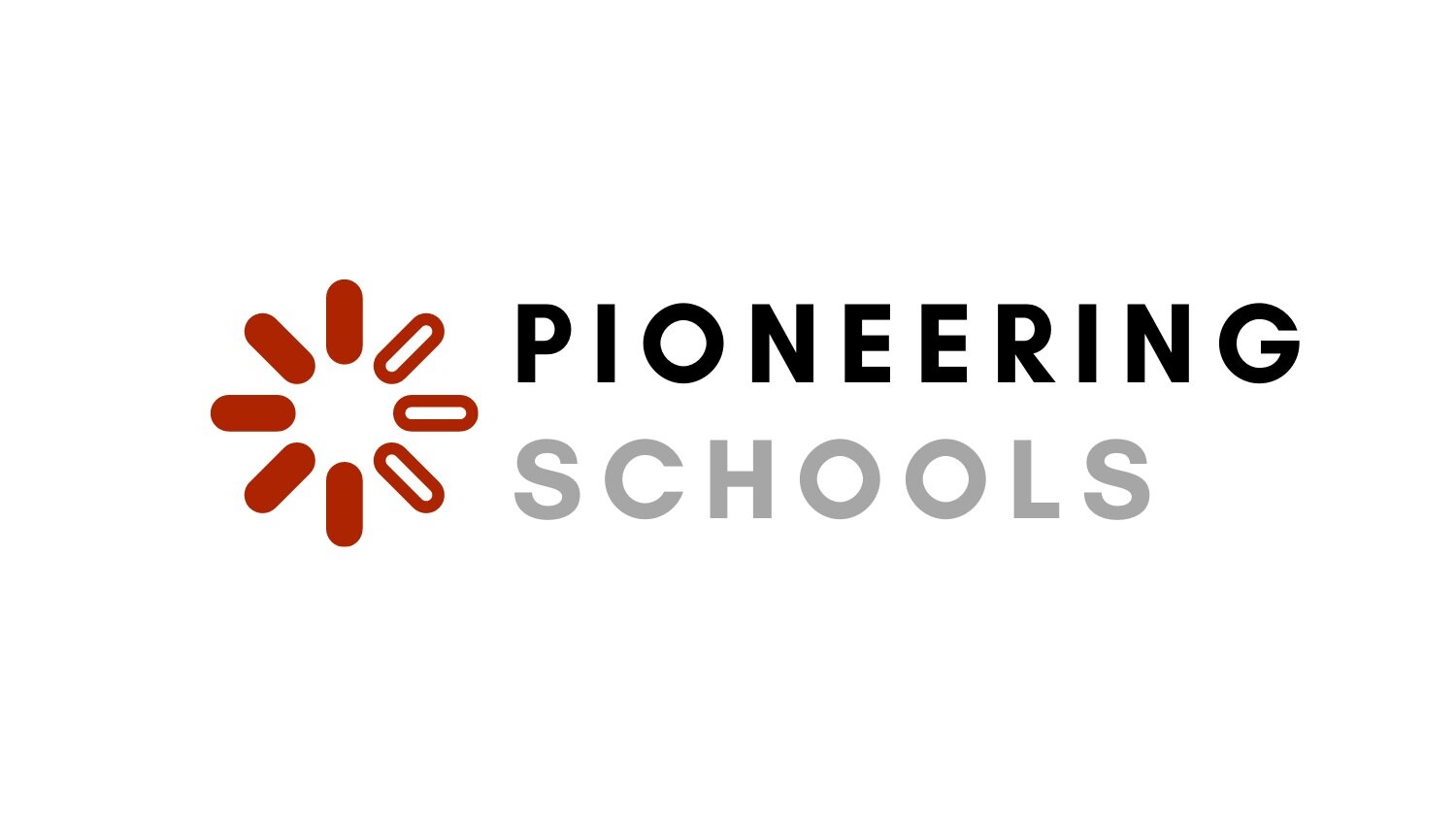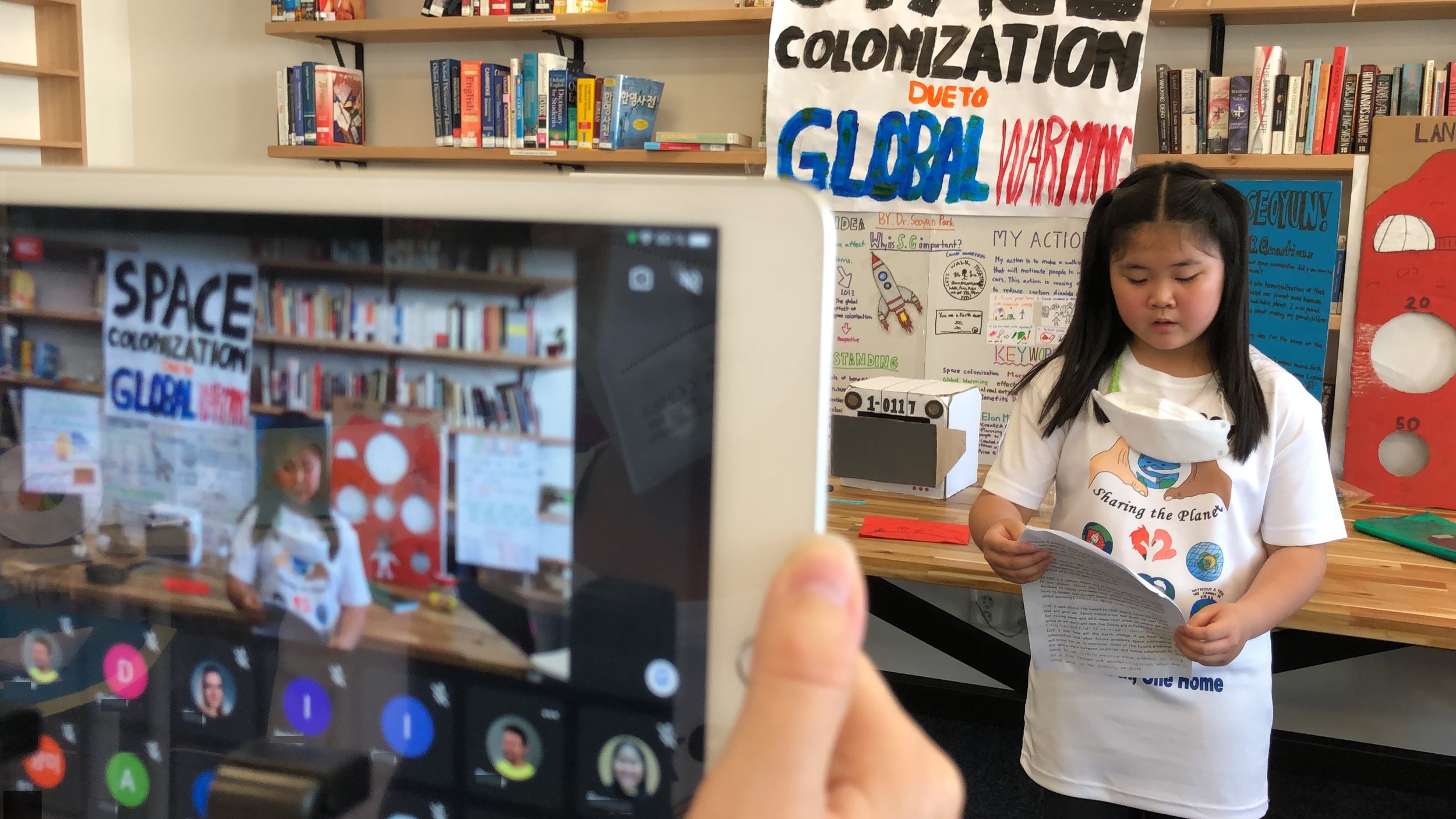Brett Gray
Brett Gray is a true pioneer. In 2008, he turned his passion for contemporary learning and teaching into reality and founded The Ostrava International School, the first authorised IB Continuum School in the Czech Republic. Today, the visionary Canadian serves as the school’s director as well as the Board Chair of The Association of Central European IB Schools. In both roles, he continues to inspire change and innovation.
Brett, you studied journalism and French at the University of Southern California in Los Angeles. What inspired you to found and run an international school in Ostrava, a city known as the ‘steel heart’ of the Czech Republic due to its coal mining traditions?
I came to Czechoslovakia, deeply inspired by Czech writer, dissident, and future president Václav Havel. I arrived a year after the fall of Communism in 1989, as a budding young journalist who was going to write about the Czech transition from Socialism to Democracy – and also teach on the side to make ends meet. How I was going to write authoritatively without speaking a word of Czech, and being reliant on people who didn’t speak much English, had not really occurred to me.
I quickly discovered that I was a much better teacher than a journalist, and that my education and upbringing had actually prepared me very well to help others improve their writing, get good at grammar, and be interested in the greater world around them. When I look back now, I see what a life-changing opportunity it was for me to not pursue journalism, to not just observe the Czech transition to civil society, but to be an active participant in making it happen.
I started a family, and dove into teaching at a local state secondary school, or gymnasium, and felt a huge sense of satisfaction that the kids were hungry for what I had to offer - a tangible sense of the west, democracy, freedom.
After about 10 years, however, I started to understand that the Czech State’s approach to teaching and learning had essentially not evolved. The system was still stuck in a teacher-centered, fact-based approach with lots of memorisation and almost no interdisciplinary learning. Children were labelled at a young age, as either good or bad at school, and once tagged, it was difficult for them to feel that they could change or evolve.
I taught very differently and belatedly began to understand that my approach to teaching and learning was actually harming some of my students, as it took them away from the system that they needed to be good at in order to be accepted at Czech universities. Entrance exams rewarded the regurgitation of simple and defined facts, not deep understanding, reflection, self-expression.
I left teaching for a couple of years and started working with the City of Ostrava and the Regional Authority on attracting new companies to our area. By the late 1990s, the coal mines and steel factories of the region were shedding huge numbers of workers, and new investment was needed.
The City and Region soon discovered that one of the most important factors keeping international companies from making the decision to come to our region had been the lack of an accredited international school for their management and development teams. I was asked to look into creating one. So this is where the socio-economic needs of the area met with my personal passion, and I launched into several projects that would eventually become TOIS - The Ostrava International School.
Comenius, the great philosopher, innovator, and pioneer of education was born in the Moravian region. Amongst other things, he promoted lifelong learning and questioned the endless memorisation of content. As a small, forward-thinking school, do you see your compact size as an advantage when it comes to implementing innovation?
I think that Comenius would have loved to teach at our school, and see his radical belief in the power of play brought to meaningful fruition.
We are a small IB Continuum school, currently with a community of around 230 students and staff members, identifying with over 30 nationalities. We are quite small in comparison to other international schools, but we feel, in our own way, that we are a pioneering school. We may not have the resources to throw at all our creative dreams, but we can make things happen, without lengthy processes to greenlight new initiatives. We usually work out the WHY and then go for it. Another advantage we have is the instant feedback we can gather from teachers and students. For example, during the switch to online learning, we were able to adjust and adapt our approaches, our scheduling, and our curricular expectations quickly, and realistically, based on the initial data we collected from our community.
We are currently going through our third five-year re-accreditation cycle with the Council of International Schools (CIS) and the New England Association of Schools and Colleges (NEASC) and thanks to this process, we feel incredibly empowered to be able to target areas for improvement, free ourselves from traditional adherence to the established curriculum, and to define for ourselves what it means to offer high-quality learning in our local and global context.
Let’s talk about your innovative approach to teaching and learning. Can you tell us more about the concept behind your 7-day block schedule?
The pandemic forced us all to look closely at how we deliver the curriculum, motivate student learning, and raise our awareness of wellbeing for both the learner and educator. When we went back to our classrooms, we arrived with a heightened sense of what was possible, if only we would take some brave steps to get there. So this is what we did:
First step: Cut Curricular Content
Across the school, almost without exception, teachers told me that there were areas of content that were outdated, inapplicable, and holding them back from introducing topics of greater relevance. Like most schools, we had simply been squeezing in additional content as it came along, without removing content to provide more breathing room for deeper understandings, skills development, collaboration, planning time, the meaningful introduction of new technologies. So, I asked my staff for the 2021-2022 academic year to try, if possible, to cut up to 20% of the least useful content in their subject areas, and see if they missed it at the end of June.
Second step: Rationalise the schedule, consider IB expectations
We were surprised to discover that our MYP and DP students had, on average, 160% percent more lesson time than the IB required minimum and 120% more than the IB recommendation. Why? Not only were we racing to fulfill the expectations of an over-bloated curriculum, but we had been stuck trying to cram lots of 45-minute lessons into a five-day cycle called Monday, Tuesday, Wednesday, Thursday and Friday. We realised that we were needlessly forcing our students and staff to endure long days at school with too many lessons.
Another issue was that often, state holidays, whole school events, and PD days tended to fall on Fridays and Mondays and that in our traditional schedule, those lost lessons would accumulate over the course of the year to the point where some subjects ended up with considerably less time.
Step three: Create a schedule that allows for blocks of teaching, and is not thrown off track by holidays, school events and PD days
Essentially, we took the IB recommended number of hours, spread that over the course of the year, and determined the ideal number of days in a “cycle”. In our case, that number is seven. It does not mean that we work seven days a week, as some staff, to my surprise, had originally feared. It works like this:
Perhaps Thursday is Day 1, Friday is Day 2, the following Monday is Day 3, Tuesday is Day 4, Wednesday is Day 5, Thursday is Day 6, Friday is Day 7, and then the following Monday is Day 1 again, and so on.
When a holiday, school event day, or PD pops up, that schedule simply jumps over it and continues without interruption. So, for example, if Wednesday is Day 4, and Thursday is a state holiday, then Friday will be Day 5. In this way, the number of lost lessons and Days is minimised to almost zero, the balance among the subjects is maintained, and staff can much better plan out their lessons for the entire year. They know, for example, that in their subject they have 5 lessons per cycle, and that there are 23 full cycles during the year.
This has also allowed us to have a schedule that finishes for the entire school before 15:00 so that students can participate in clubs, or go home. The only exceptions are DP students with high-level courses, and some specialised mother-tongue lessons.
You are the first authorised International Baccalaureate Continuum School in the Czech Republic and one of the few schools in the world with an Academic Honesty Coordinator. Could you tell us more about this initiative?
We began to do some internal research about why some students were struggling with our school’s Academic Honesty policy, and by extension, the expectations of the IB. We discovered several issues, some obvious, some surprising.
Learners who are new to English have a difficult time synthesizing and then reformulating and expressing ideas and concepts in their own English. So, Academic Honesty can to a significant degree be a question of language level.
Some learners come from schools or cultures that do not understand Academic Honesty in the same way as our school or the IB. Some learners come from backgrounds that actually encourage a copy/paste mentality, with no regard for originality, in search of efficiency or a perceived “right answer”.
As a result of an in-house survey, we determined that roughly 70% of citations red-flagged by the plagiarism detection software TurnItIn were unintentional.
This changed our perspective about Academic Honesty, as an issue not primarily about behaviour (kids don’t necessarily want to be academically dishonest) but rather about ability (kids needed age-appropriate tools, and encouragement). This changed our mindset from one of punishing bad practices to positive re-enforcement through the provision of tools.
We started by clarifying our school’s understanding of the rules of the game for the entire community. Already at the Early Years level, learners are exposed to concepts ethics and moral concepts. At the Early Years level, this can be as simple as telling stories about someone cheating and illustrating common ethical grounding in moral rules that children already participate in, like fair play and honesty.
At the Primary level, students begin with a simple acknowledgment of sources and taking ownership of their own work. We have worked to educate our staff not only about detecting academic dishonesty but also about preventing dishonesty, by making sure the students know the moral and ethical grounding that is the base for all academically honest work.
At Secondary, 11-year-olds begin to learn how to make proper citations using MLA, and to give credit where it is due in assignments, essays and public presentations. Students and teachers alike are continually taught about Academic Honesty throughout the Secondary years. We train students to take agency over their own work, and in the higher grades of the Secondary School, students are able to fix their own citation mistakes by using the same software that the teachers use to check for plagiarism.
We have found that the greatest result of our Academic Honesty coordination is that students take more pride in their work, are more willing to defend it, and are more conscious about using the work of others.
Thank you, Brett for sharing your inspiring journey. For more information on learning at TOIS visit: www.tois.world





